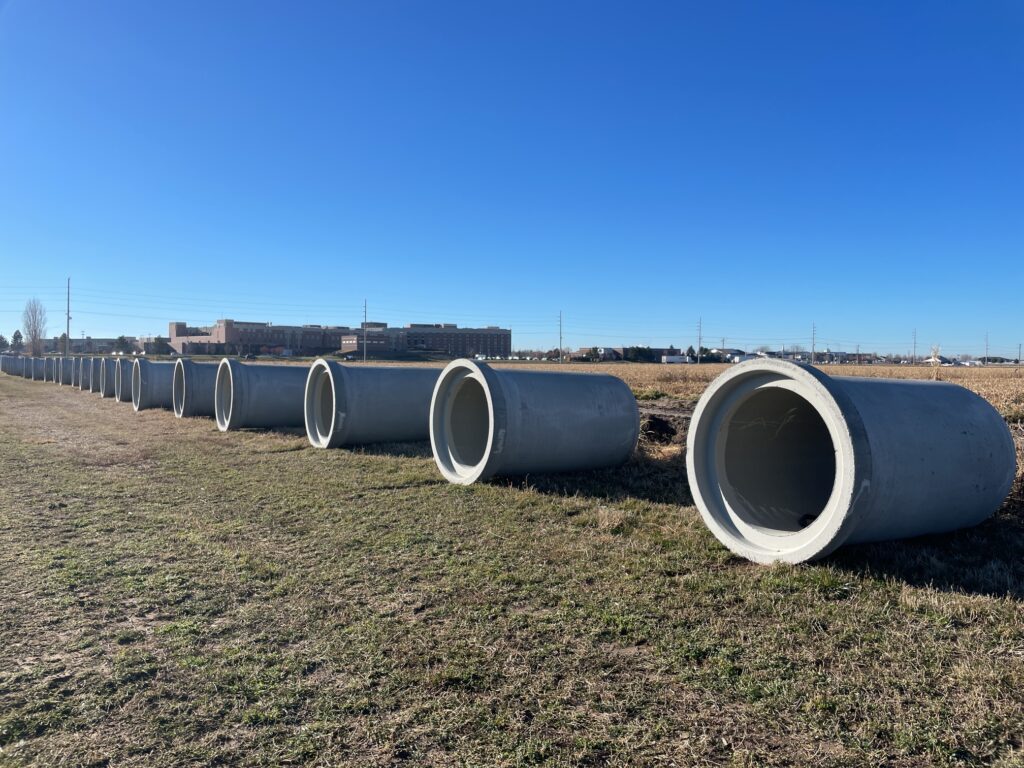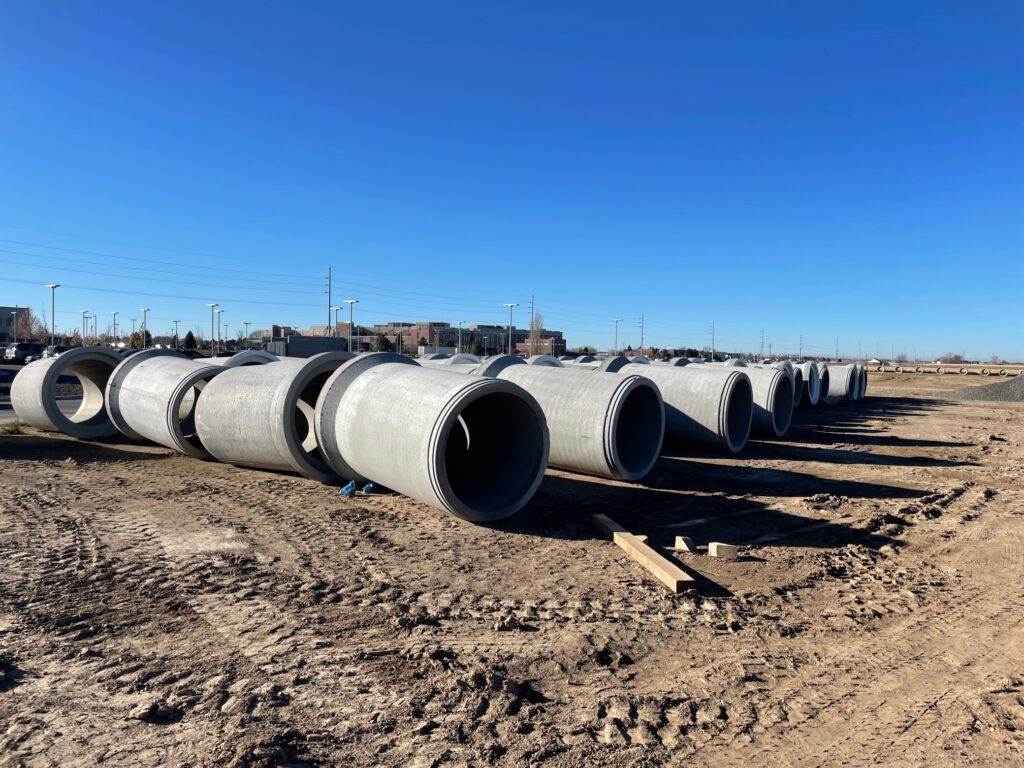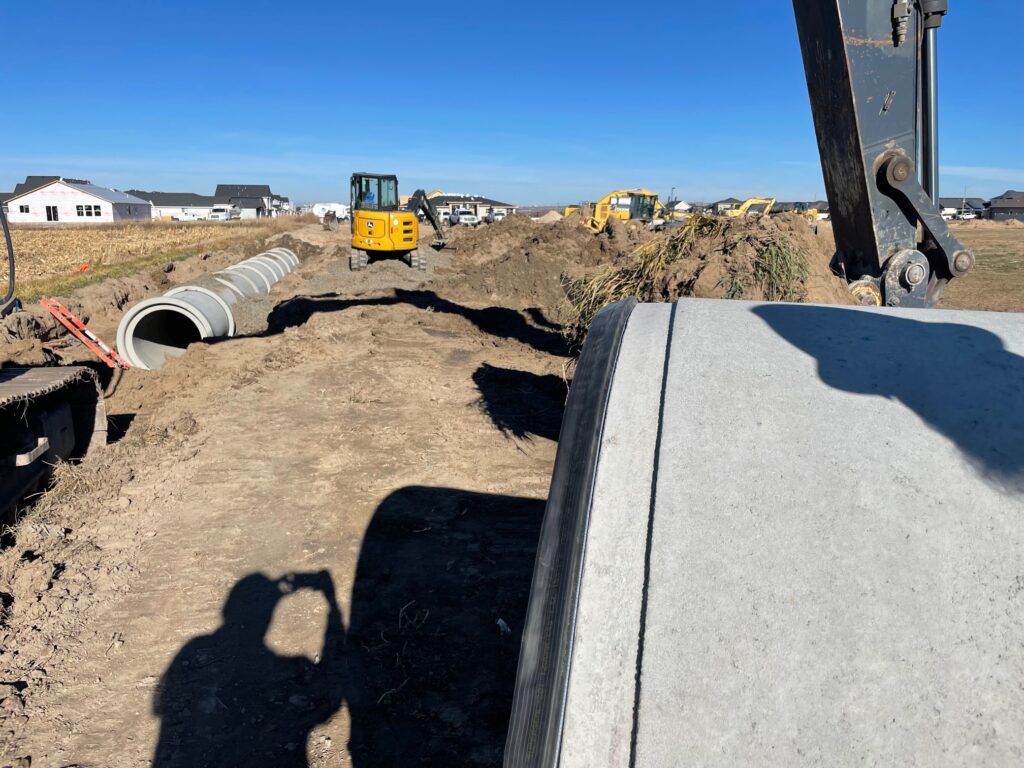
Project Name: Twin Falls Subaru Canal – Twin Falls, Idaho

Owner: Subaru of Twin Falls
Contractor: J5 Construction
Engineering Firm: EHM Engineers
Date: December 2021 – Present
Manufacturer: Oldcastle Infrastructure
Location: 1725 Parkview Drive, Twin Falls, ID 83301
Product Specifications: (size, material, etc.): 1,112 feet of 48-inch Class III RCP

Photo courtesy of Oldcastle Infrastructure
Overview:
In order to expand development in the area west of Twin Falls, the Subaru dealership chose to pipe an existing gravity irrigation canal with over 1,100 feet of 48-inch Class III reinforced concrete pipe.

Photo courtesy of Google Earth
Narrative:
As development continues on the west side of Twin Falls, Idaho, the City, ditch companies, and developers have had to come together to determine what to do with the existing open channel irrigation canals through the area. The new Subaru dealership in Twin Falls is no exception. On the west boundary of the property, there is a large open irrigation ditch. In order to develop this area, the ditch will need to be enclosed.

Photo courtesy of Oldcastle Infrastructure
After looking at the different options, reinforced concrete pipe was chosen as the best alternative to enclose the ditch. The biggest issue when piping a ditch is your grades and elevations of the inlet and outfall. Many fields depend on this water to irrigate their fields. Modifying the grades could have a detrimental impact on the farming operations in Twin Falls. Because of the controlling grade, many times you are restricted in how much cover you can put over the pipe. In these cases, a rigid, structurally sound, pipe like Reinforced Concrete Pipe is a must in order to withstand the loads with shallow cover.

Photo courtesy of Oldcastle Infrastructure
Another benefit of reinforced concrete pipe is the rubber gasketed joints. These joints are water-tight up to 13 psi, which is more than adequate for a gravity irrigation ditch. RCP with rubber gasketed joints provide minimal losses of water compared to open, earth-lined channels. They also provide improved hydraulics with less friction losses.

Photo courtesy of Oldcastle Infrastructure
On this project, Oldcastle provided the contractor with “self-lubricating gaskets.” These gaskets are an improvement over the previous O-Ring or Profile gaskets which required liberal amounts of lubrication to function properly. These new gaskets have lubrication within the gasket itself, and as the spigot enters the bell, the lubricated chamber folds over on itself and locks into place, providing a tight seal inside the joint. Because these joints don’t require lubrication, the installation process is faster–and cleaner–for the contractor.

Installation Video: